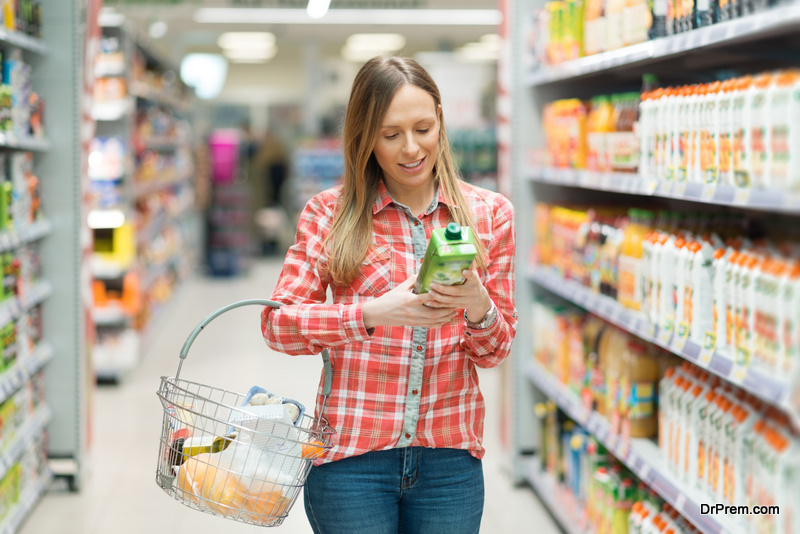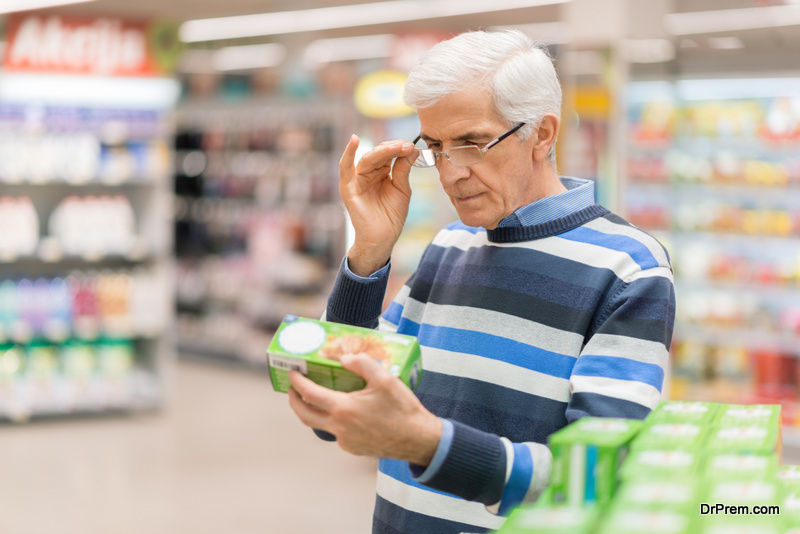You must have seen ‘sustainably produced’ or ‘all natural’ or other similar phrases written on products. These claims are sometimes not all that they promise. With beautiful visuals of nature and good health, both big and small companies give the impression that you are buying a product which is eco-friendly. This ‘creative’ branding or re-branding is called Greenwashing, which is new way that companies have hit upon to attract and mislead customers who want to buy eco-friendly products. Take a look at how to spot greenwashing:
1. How to spot greenwashing and stop it
 Greenwashing can be pretty simple or it can be much more complex. It could a bag of potato chips which has a farm scene to imply how ‘natural’ it is. If you compare the chips of a normal bag of chips and one marked ‘natural’, you might find superficial differences, but look closer and you will see that the number of the calories and grams remain the same.
Greenwashing can be pretty simple or it can be much more complex. It could a bag of potato chips which has a farm scene to imply how ‘natural’ it is. If you compare the chips of a normal bag of chips and one marked ‘natural’, you might find superficial differences, but look closer and you will see that the number of the calories and grams remain the same.
2. Don’t fall for the green keywords
Brands as well as marketers have come up with some images and keywords which we associate with being environment friendly. These include images of leaves, a blue and beautiful planet earth, fresh water, along with words such as pure, green, natural, enviro, eco and so on. Pictures of farms, fruits and other types of faux branding are allowed to be used, as there are no laws against any particular kind of images that companies can or cannot use.
For example, if you buy a pack of French fries, the image of the fresh potatoes in a farm background might make you think the product is more eco-friendly than it actually is. Similarly, words can deceive you, as ‘natural’, does not really mean anything, and can be used legally by anybody.
Whenever you come across these words and images, you should take a closer look and read in detail the information on the packaging to stop greenwashing.
3. Beware of the colors
 One of the greenwashing tricks that brands are using these days is changing their product packaging colors from vibrant, flashy, unnatural colors to more of browns, greens and blues. As we are conditioned to relate these colors to nature, the brands exploit this connection of colors to nature, thus enticing consumers who show an interest in health and environment. Do not be deceived by the nature inspired colors, and assume that the product is eco-friendly.
One of the greenwashing tricks that brands are using these days is changing their product packaging colors from vibrant, flashy, unnatural colors to more of browns, greens and blues. As we are conditioned to relate these colors to nature, the brands exploit this connection of colors to nature, thus enticing consumers who show an interest in health and environment. Do not be deceived by the nature inspired colors, and assume that the product is eco-friendly.
4. Read ingredients list carefully
All the genuine eco-friendly brands always state the things which their products do not include, such as synthetic fragrances, parabens, SLS and so on. They also mention clearly all the ingredients that they use.
When you read the ingredients list, you will get to know whether a product is truly eco-friendly or not. The companies who attempt to greenwash can be revealed by their ingredient list, when you can find out whether the ingredients are natural, organic and so on. To stop greenwashing,you have to be savvy and avoid all the brands and products who try to mislead you. Only then, they will start to make products which are actually green.
5. Look for third party accreditation
 Pay attention to the labels on the packaging. The brands which are truly eco-friendly will definitely make the effort to mark their products as ‘Certified Organic’ from organization which are known to be strict and reputed. Greenwashing companies may just mark their products as organic without any accreditation to back up their claims.
Pay attention to the labels on the packaging. The brands which are truly eco-friendly will definitely make the effort to mark their products as ‘Certified Organic’ from organization which are known to be strict and reputed. Greenwashing companies may just mark their products as organic without any accreditation to back up their claims.
For example, in Australia, it should be marked as ‘Australian Certified Organic’, and in the US, as USFDA Certified Organic. Other countries would have similar organizations which could be governmental organizations or non-governmental agencies. The USFDA certification is deemed reliable as it checks the product from the process sourcing, manufacturing and marketing.
If you do not want to support GMO products, then its best to buy products which are non-GMO. The non-GMO label is not an official certification, but it is the leading certification for non-GMO products. This seal is difficult to get, as the organization requires products/produce to be no GMO absolutely from the seeds, plants, cows and so on. So,don’t believe thegreenwashing companieswhich claim their products to be non-GMO without the non-GMO seal on the package.
Also check the brand’s parent company as many of the big brands have taken out only one or two products which are eco-friendly but these are a front for the non-environment friendly practices of the whole brand.
6. Do your research
One of the best ways to find about brands is to go online and read about them. The brands which follow eco-friendly practices always flaunt the fact on their websites, as it is very good for the bottom line. Consumers are prone to buy and support brand which are seen to be doing their bit for the environment. They would have their certification records, donations to charities and other documentation on the site.
However, fake brandswill not have any kind of mention of eco-friendly practices on their sites. They might still claim to be eco-friendly, but will not display any documentation on the site. There is therefore no proof of their tall claims.
You have to read the fine print carefully, because sometimes even though the product is good for the environment, it might be polluting local waterways, soil and so on. The company might not be paying fair price to the workers or sourcing ingredients locally. The background research is the way that you would get to know how green the company is. Google the company name and environment, or environmental efforts and then you might be surprised at what turns up on your screen.
7. Watch out for fake approval seals
 Fake brands can go to the extent of attaching fake seals on their products.As most of us are unaware of the authentic organizations, the so-called green companies do not shy away from marketing their product with fake approval seals. One of the ways to spot this would be to check which organization has issued the approval seal. Sometimes, there is no name of the third party organization on the product – it’s just a self-proclamation by the brand!
Fake brands can go to the extent of attaching fake seals on their products.As most of us are unaware of the authentic organizations, the so-called green companies do not shy away from marketing their product with fake approval seals. One of the ways to spot this would be to check which organization has issued the approval seal. Sometimes, there is no name of the third party organization on the product – it’s just a self-proclamation by the brand!
8. Why is there so much greenwashing prevalent?
The worst thing is that legally, greenwashing is permitted. There are rules and regulations as yet to stop companies from making false claims. So it is up to you to stay informed and conduct your own research. You have to become adept at recognizing the truth behind the claims.
The term which is most commonly used is ‘all-natural’ and you would be surprised to know that there is no legal restriction on using this term. Organizations such as the FDA do not regulate the all-natural term and other terms like this, so basically greenwashing is not punishable by law.
9. Understand what ‘green’ products really mean
 What exactly is meant by a green product, what criteria does it have to fulfill to become sustainable product. For example, does ‘sustainably produced’ mean that the manufacturer has made a commitment to non-plastic use in packaging, green farming practices and efficient manufacturing that they follow circular economy and so on.
What exactly is meant by a green product, what criteria does it have to fulfill to become sustainable product. For example, does ‘sustainably produced’ mean that the manufacturer has made a commitment to non-plastic use in packaging, green farming practices and efficient manufacturing that they follow circular economy and so on.
10. Is the info too complex?
Another greenwashing trick is trying to confuse the consumer with a lot of technical jargon, which no layman could ever understand. Green products which are genuine make it easy for consumers to understand. If the product you are thinking of purchasing has information which is full of the molecular composition but not saying what it is actually, then better to put it down.
11. Take care before you invest
 Many people are interested in investing in Environmental, Social and Governance to support the survival of the planet. This interest is exploited by unscrupulous companies who project a false image of being eco-friendly,i.e. they greenwash the consumer. Greenwashing in ESG is done by companies engaging in public relations strategy and marketing strategy as though they are aligned with ESG goals.
Many people are interested in investing in Environmental, Social and Governance to support the survival of the planet. This interest is exploited by unscrupulous companies who project a false image of being eco-friendly,i.e. they greenwash the consumer. Greenwashing in ESG is done by companies engaging in public relations strategy and marketing strategy as though they are aligned with ESG goals.
In fact, many stockbrokers are now becoming apprehensive about funds which claim to be ESG. As there is no standard right now to verify or hold companies accountable to that standard, you as an investor have to critically analyze every company to ensure that you do not become the victim of greenwashing.
12. Beware of ESG ratings
There are firms which give ESG ratings but there are many differences in the way ratings are given by the rating agencies. There are large ESG ratings providers such as Bloomberg ESG Data Services, DowJones Sustainability, FTSE Russell and smaller standalone providers such as Sustainalytics, Vigeo Eiris and so on. While building a green portfolio, experts suggest to use historical ratings as guides and not ignore the future earnings as well as cash flows.
In conclusion, look for proof about any company’s claims to be eco-friendly with the aid of certification from reputed and trusted third-party organizations. Also, you have to do the research on the companies you want to invest in or want to become a regular consumer of their products.



